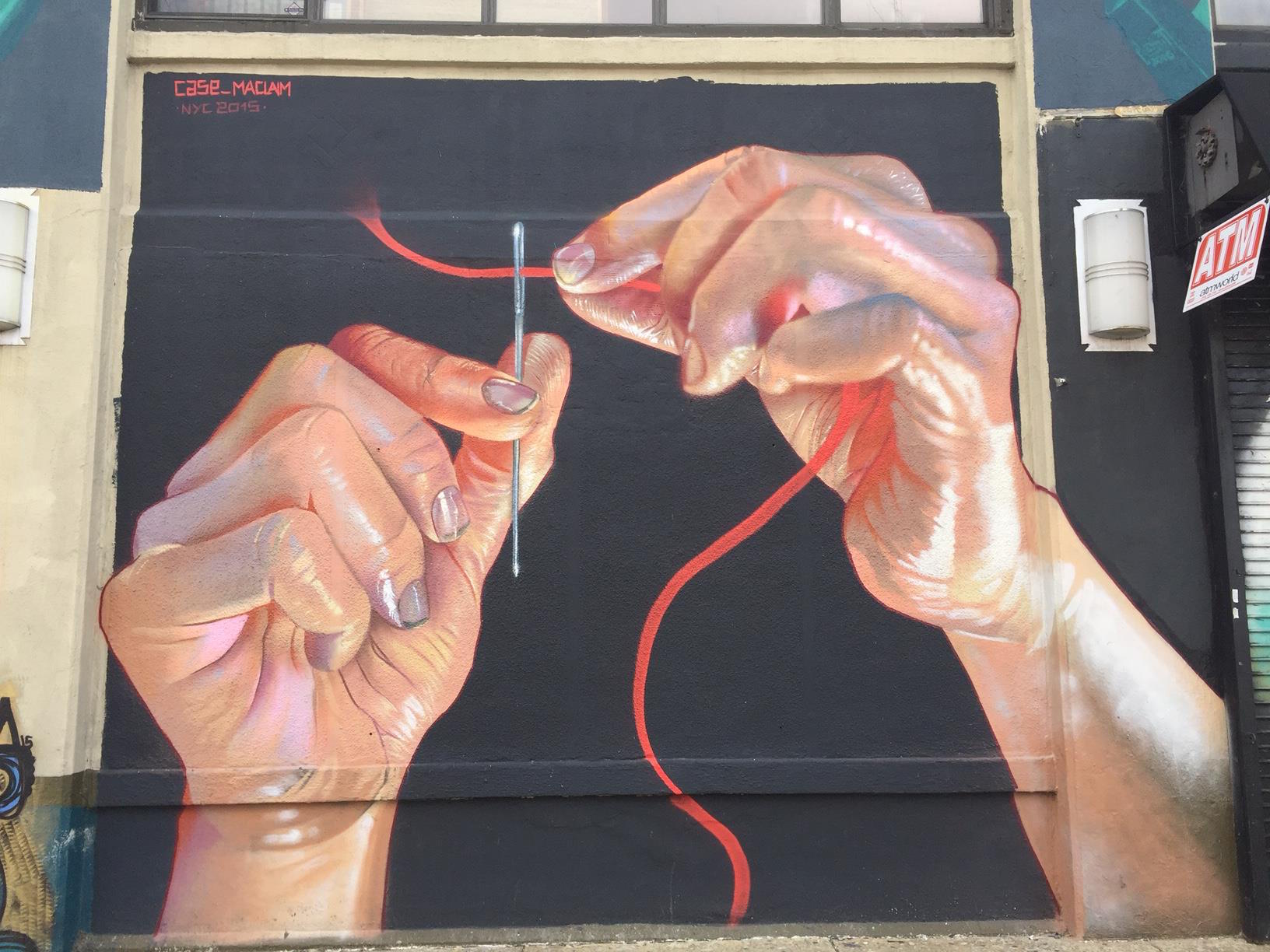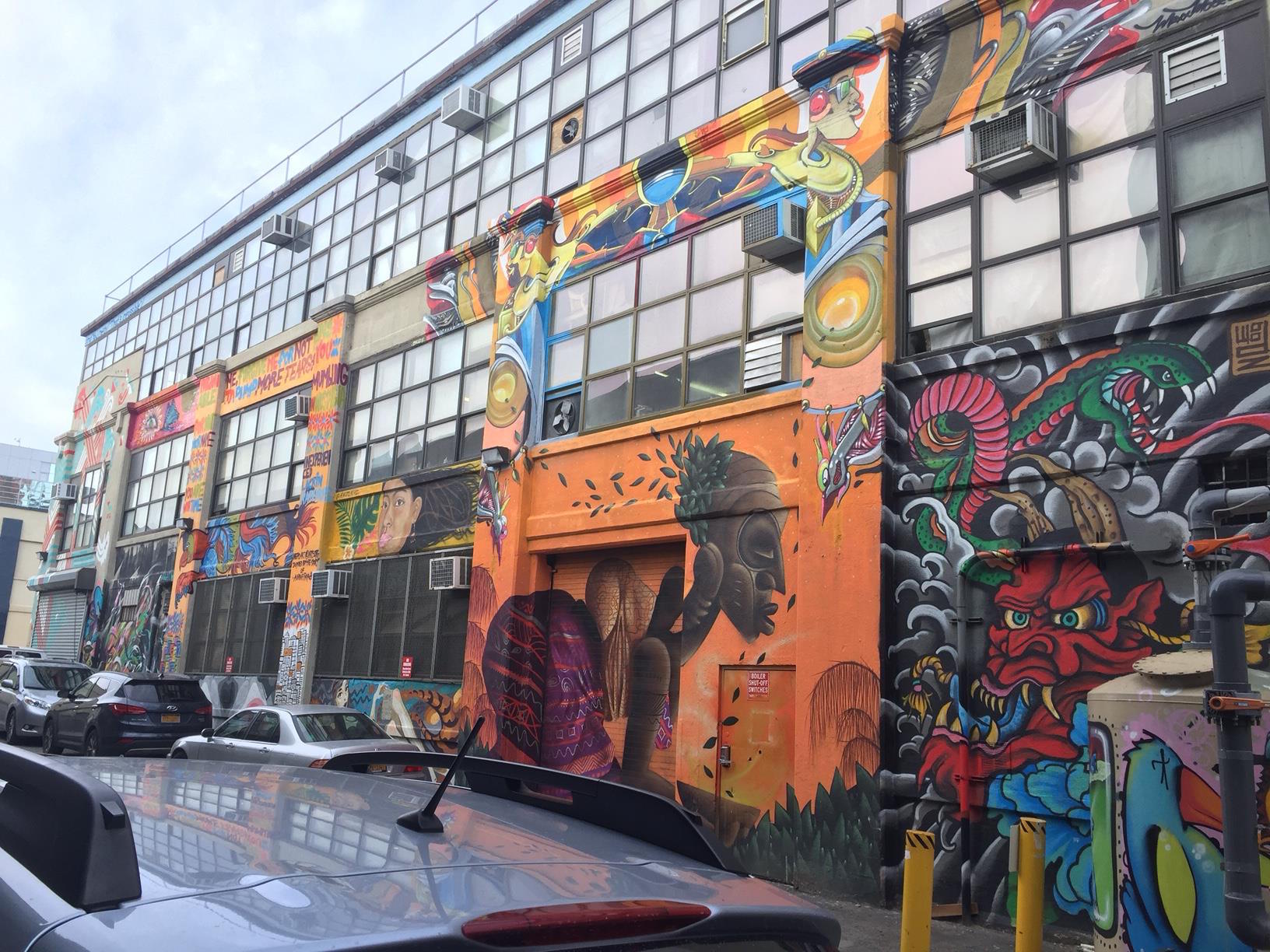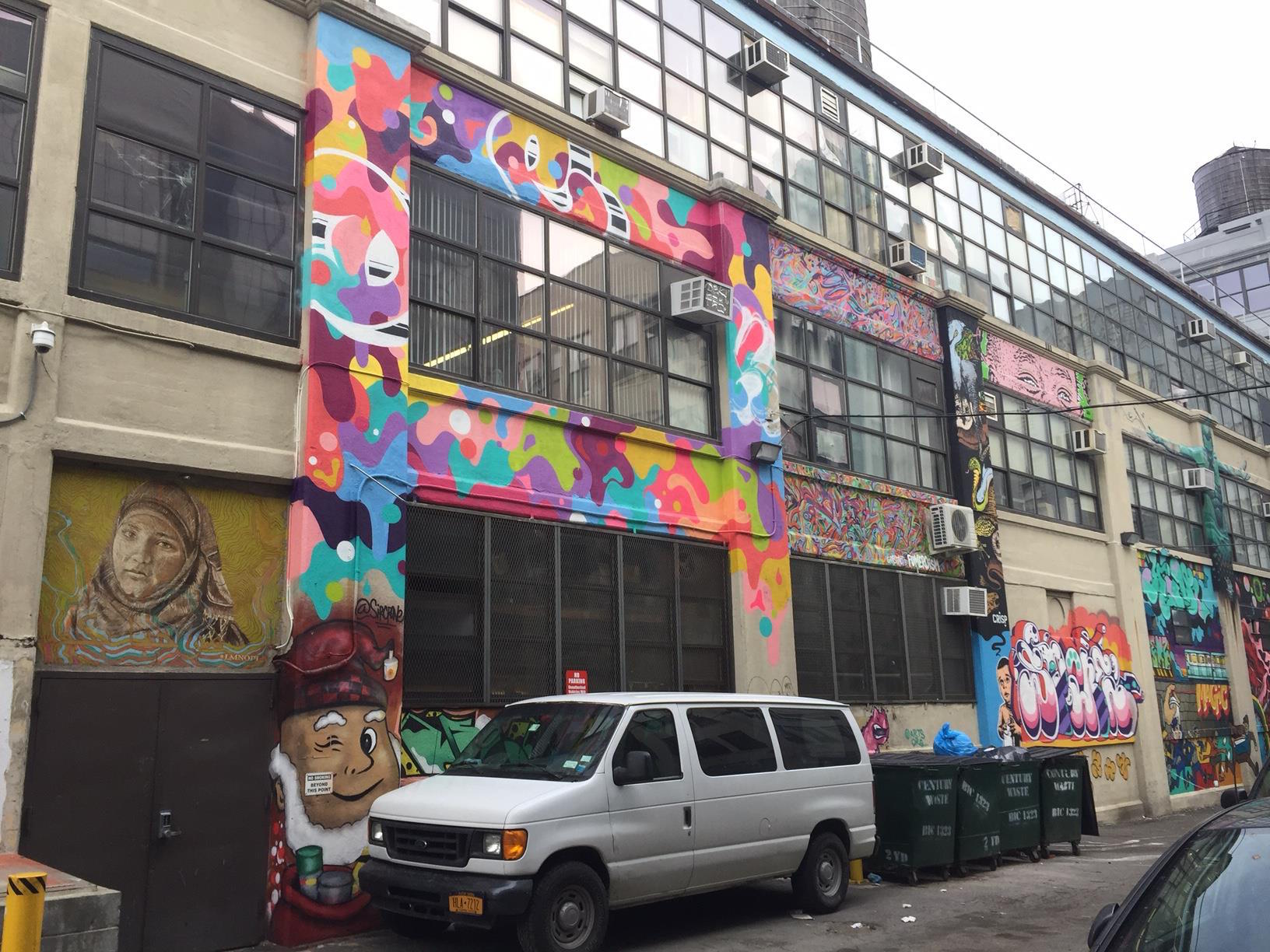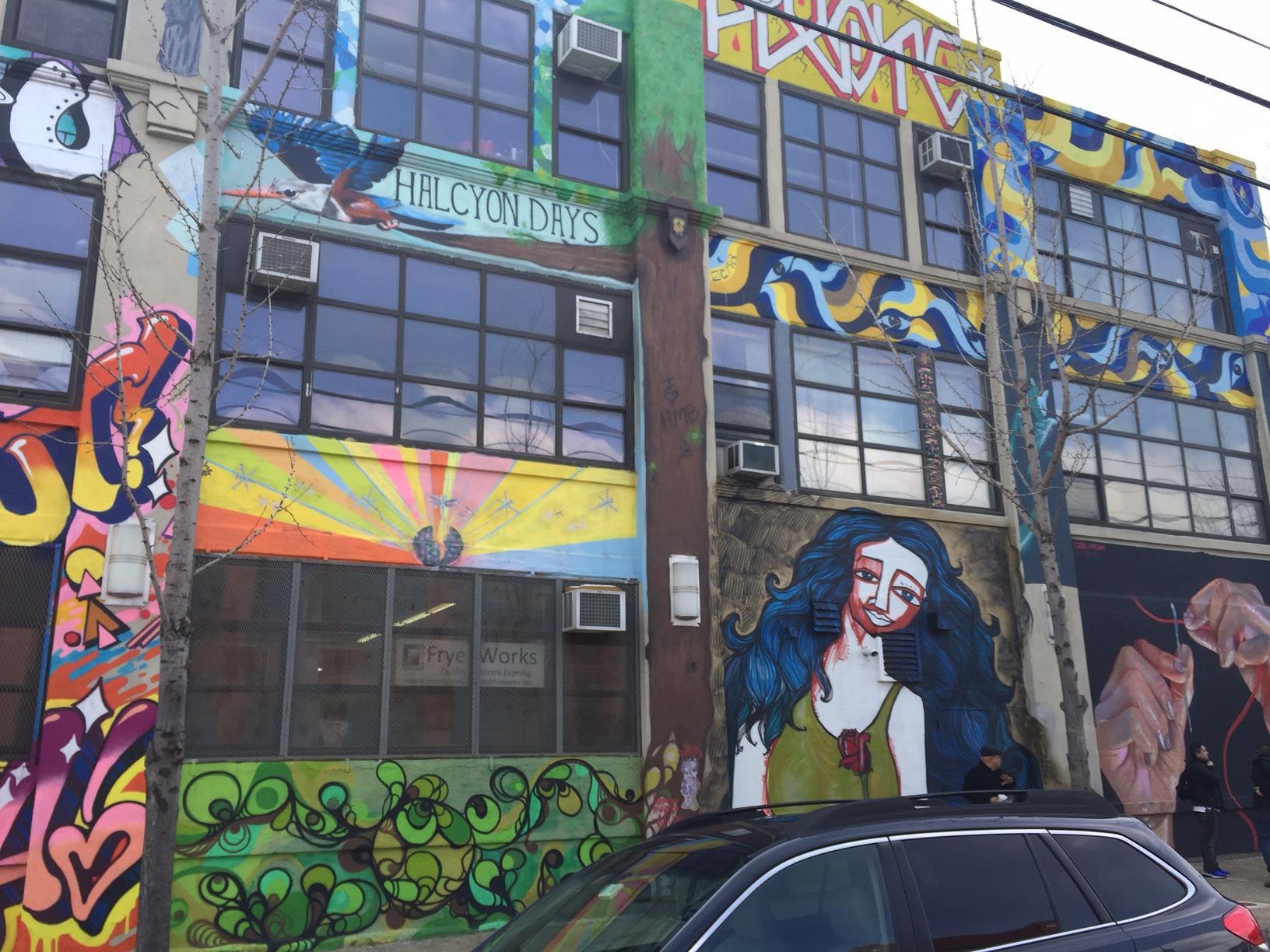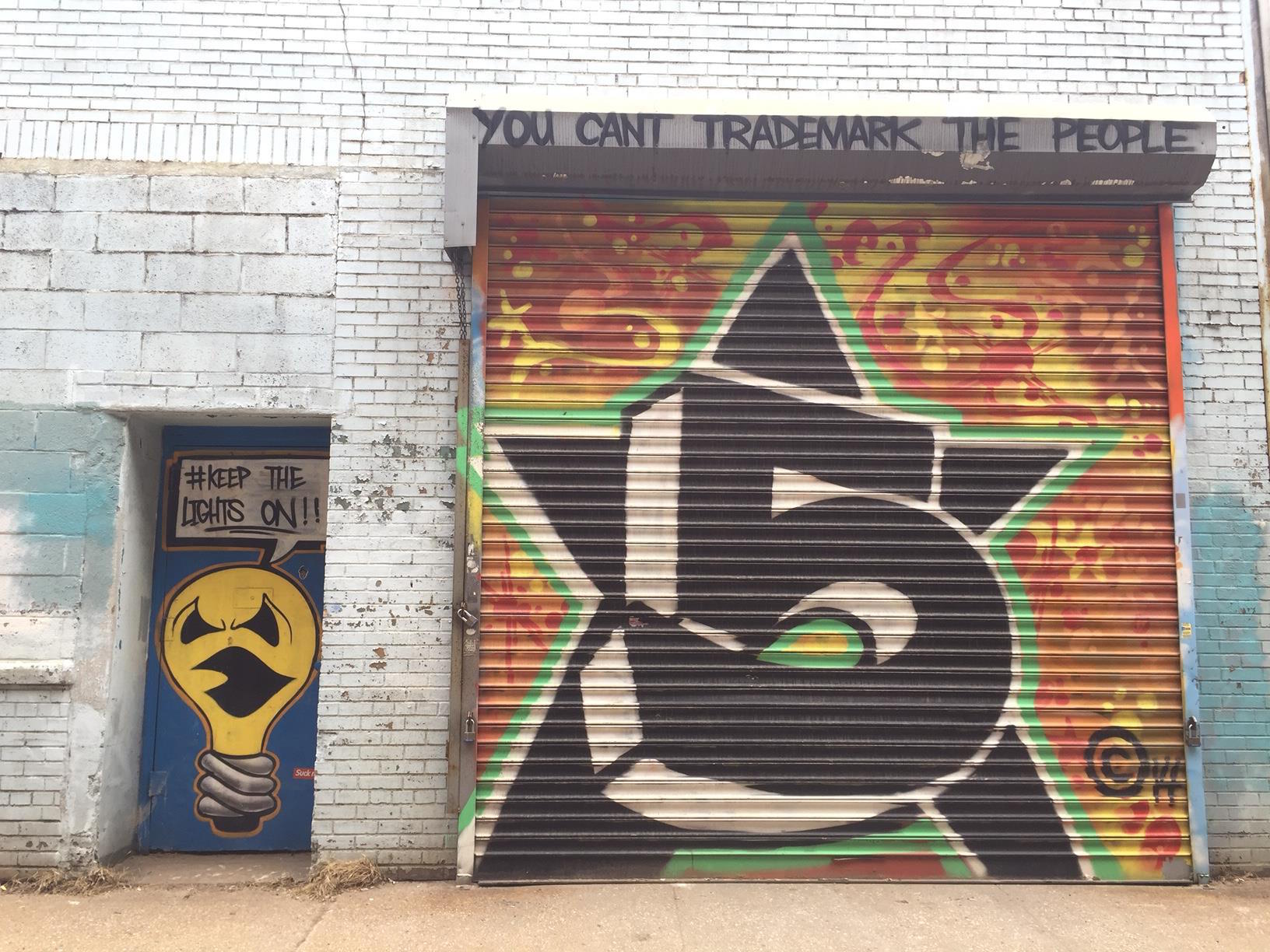Covering Queens in Art, Top to Bottom
/More and more people are discovering that the city's fastest growing art scene isn't in Manhattan... it's in Queens. The waterfront neighborhoods around Long Island City have a growing number of art galleries and co-working spaces. They also an impressive collection of museums: MoMA PS1, the Sculpture Center, The Noguchi Museum, Socrates Sculpture Park, & more. And in the warmer months, you can also stop by the popular LIC Food & Flea festival, and catch the views from the waterfront parks.
But Long Island City (or, LIC) has always been synonymous with street art. The neighborhood once housed the the world's premiere “graffiti Mecca”: 5Pointz... aka, The Institute of Higher Burnin', aka 5Pointz Aerosol Art Center. Artists from all over the world would apply for a chance to paint on this site. The building itself, while huge (200,000-sq-ft/19,000-m2!), was not itself otherwise remarkable. It was simply a privately-owned factory building that the owner had converted inside to rented artist studios, and turned on the outside to a heavily-curated graffiti gallery. (And curated it was: artists would have to submit portfolios/samples for a chance to make their mark on its walls)
Most New Yorkers became familiar with it while riding the 7 train, as the massive complex, and its painted walls, was the first thing one would see as the train came above ground in Queens.
The building was even featured in TV & movies, such as the climax of the 2013 film, "Now You See Me".
Alas, the growing popularity of Long Island City ultimately sealed 5Pointz's fate. The building's owner was made a generous offer for the land by developers, and he sold. After a failed effort by artists to have the building landmarked, it was demolished. A large, luxury residential complex is currently going up where it once stood. Some 5Pointz-era street art on the other end of Davis St is all that remains of the former mecca.
RIP.
Today, the NYC street art community has largely splintered, with efforts centered around new areas like Bushwick or the Lower East Side or Welling Court in Astoria.
But one organization is looking to create a new mecca nearby in LIC. Arts Org NYC is a group that has worked on numerous projects. Their main project now is called "Top to Bottom", centered at a huge building at the intersection of 21st St & 43rd Ave, just a 10-minute walk from where 5Pointz once stood. The project was recently spotlighted on The Huffington Post. They have gathered some very popular street artists to cover their building from, you guessed it, top to bottom with gorgeous and fun murals. “It’s just a beginning,” creative director James P. Quinn said.
I visited the site today, and was so happy to see that street art in LIC is still thriving. It inspired me to do something I've been thinking about for a while... create a tour of Long Island City, focused around its street art scene. That will be added to this site very soon. I love this neighborhood in general, and think it's a great way to introduce people to the very underrated borough of Queens.
Here is a slideshow of some of my photos from today's exploration.
Know anyone interested in this type of tour? Please spread the word!





